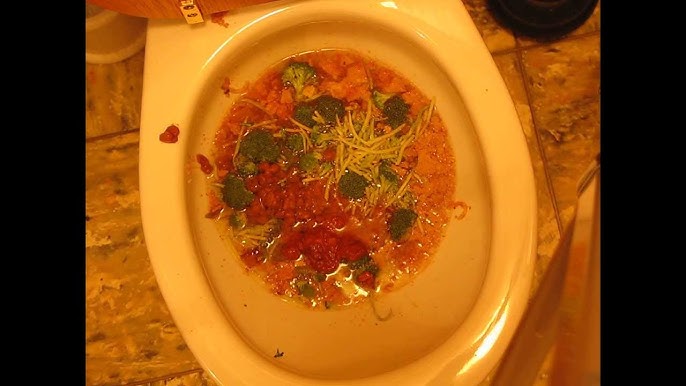Is it Permissible to Flush Food Down the Toilet?
Is it Permissible to Flush Food Down the Toilet?
Blog Article
They are making several great points related to What Can Happen If You Flush Food Down the Toilet? overall in the article in the next paragraphs.

Introduction
Many people are frequently faced with the predicament of what to do with food waste, particularly when it comes to leftovers or scraps. One typical inquiry that occurs is whether it's alright to flush food down the commode. In this write-up, we'll delve into the reasons why individuals might consider flushing food, the repercussions of doing so, and different methods for correct disposal.
Reasons that individuals could consider purging food
Lack of recognition
Some individuals might not know the potential damage caused by purging food down the commode. They might incorrectly think that it's a safe technique.
Benefit
Purging food down the toilet might seem like a quick and simple option to dealing with undesirable scraps, specifically when there's no close-by trash can offered.
Negligence
In many cases, people might just choose to flush food out of large negligence, without taking into consideration the effects of their activities.
Repercussions of flushing food down the toilet
Environmental effect
Food waste that winds up in rivers can contribute to contamination and harm marine ecological communities. Furthermore, the water used to flush food can stress water resources.
Pipes problems
Purging food can bring about clogged up pipelines and drains, creating expensive plumbing repairs and troubles.
Kinds of food that should not be flushed
Coarse foods
Foods with fibrous structures such as celery or corn husks can get tangled in pipelines and trigger obstructions.
Starchy foods
Starchy foods like pasta and rice can absorb water and swell, resulting in clogs in pipelines.
Oils and fats
Greasy foods like bacon or food preparation oils must never ever be purged down the toilet as they can strengthen and create obstructions.
Appropriate disposal techniques for food waste
Utilizing a waste disposal unit
For homes outfitted with waste disposal unit, food scraps can be ground up and flushed through the plumbing system. However, not all foods appropriate for disposal in this way.
Recycling
Specific food product packaging products can be recycled, decreasing waste and lessening environmental influence.
Composting
Composting is an environmentally friendly method to deal with food waste. Organic products can be composted and utilized to enhance dirt for horticulture.
The importance of appropriate waste monitoring
Reducing ecological damage
Proper waste management techniques, such as composting and recycling, help decrease pollution and protect natural deposits for future generations.
Protecting plumbing systems
By staying clear of the technique of flushing food down the commode, homeowners can prevent costly plumbing repair work and maintain the honesty of their pipes systems.
Verdict
To conclude, while it may be appealing to purge food down the toilet for ease, it is very important to comprehend the potential repercussions of this activity. By embracing appropriate waste administration methods and taking care of food waste sensibly, people can contribute to much healthier plumbing systems and a cleaner environment for all.
FLUSH FOOD DOWN THE TOILET?
FLUSHING FOOD CAN CAUSE BLOCKED DRAINS IN YOUR HOME
All of the plumbing fixtures in your home are connected to the same sewer pipe outside of your home. This outdoor sewer pipe is responsible for transporting all the wastewater from your home to the Council sewer mains. Even small pieces of food that go down the kitchen sink can cause problems for your sewer. It should therefore be obvious that flushing larger bits of food, such as meat, risks a clog in either the toilet itself or the sewer pipes. Flushing greasy food is even more problematic because oil coagulates when it cools, coating the interior lining of your pipes.
THE TOILET IS NOT A BIN
Food isn’t the only thing that people shouldn’t be flushing down the toilet. People use the toilet to dispose of all kinds of things such as tampons, makeup wipes, dental floss, kitty litter and even underwear. Water goes to great lengths to educate residents about the high costs and stress placed on wastewater treatment systems simply from people flushing the wrong stuff down the toilet. It costs taxpayers millions of dollars each year, and homeowners thousands in blocked drain repairs.
FLUSHING FOOD IS A WASTE OF WATER
Flushing food is a waste of our most precious resource - water. In June this year Level 1 water restrictions were introduced to protect water supply from drought conditions. Much of New South Wales continues to be affected by prolonged drought with recent figures revealing up to 97 per cent of the state remains in drought. Depending on whether you have a single or dual flush toilet, every single flush uses between five and 11 litres of water. In the current climate this is a huge amount of water to be wasting on flushing food that should be placed in the bin (or better yet, the compost).
https://www.jabplumbingsolutions.com.au/blog/can-you-flush-food-down-the-toilet

Do you like reading about Flushing Food Down the Toilet?? Give a short review below. We'd be glad to see your feelings about this blog post. Hoping to see you back again later on. Sharing is caring. You won't know, you may just be helping someone out. Bless you for your time. Please check up our blog back soon.
Click Here Report this page